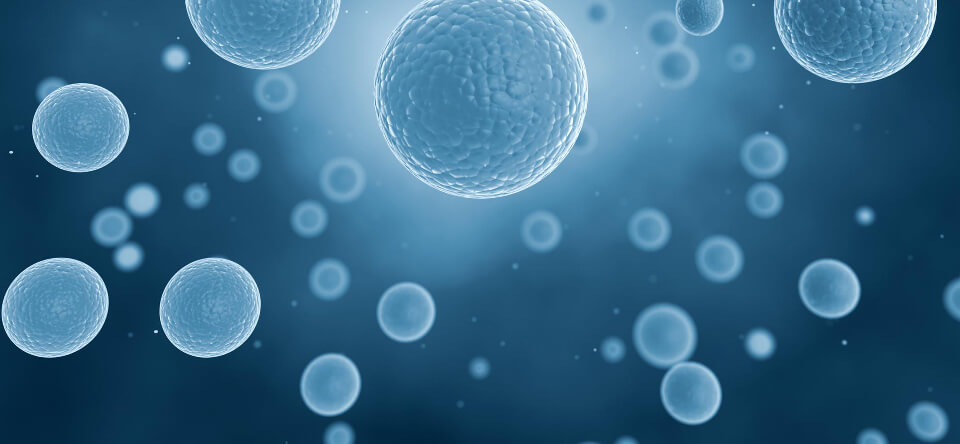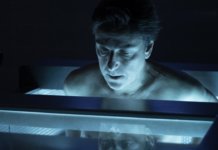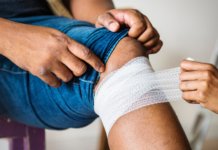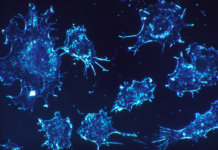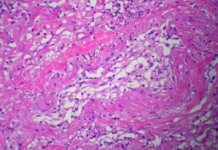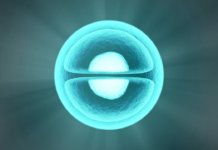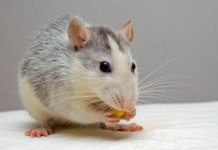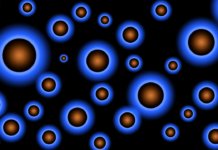Part 3: The central role of stem cells and telomeres in the aging process
Spent stem cells and aging
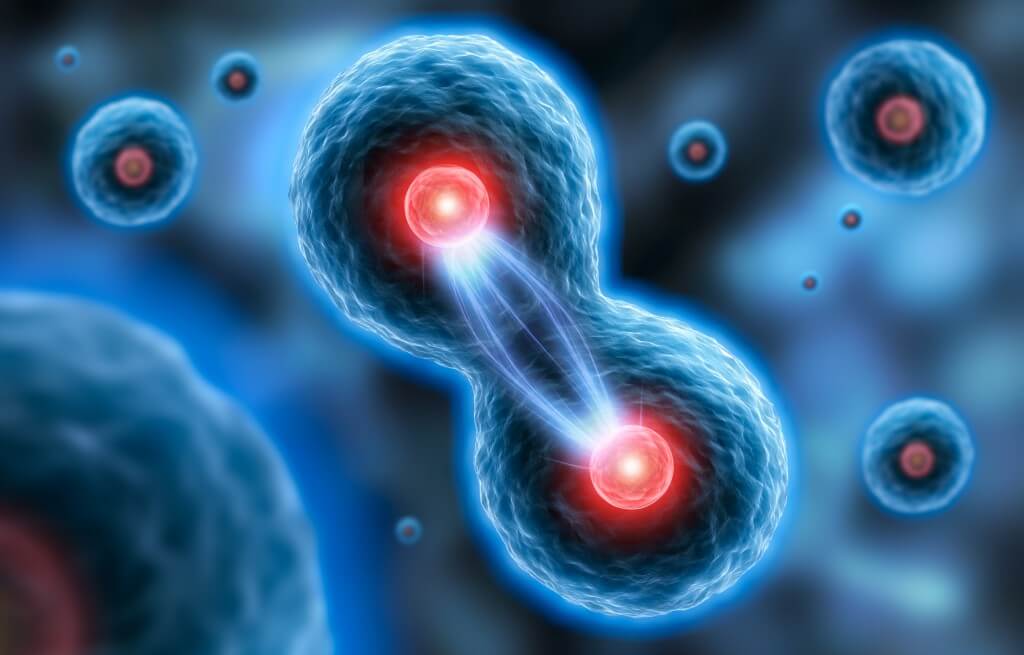
As we age, our stem cell count decreases and we have less and less new somatic cells, which leads to the degradation to organs linked to aging [1].
In cellular biology, a stem cell is an undifferentiated cell which can both generate specialized cells through cellular differentiation, and remain in the body by proliferation (or asymmetrical division). All multicellular living things have stem cells. They play a key role in the development of any organism as well as maintaining their integrity throughout their life.
Stem cells spending is among the risks induced by the aging process [1]. They can continue dividing beyond the Hayflick limit (see: Telomeres, at the heart of the aging process). This phenomenon is partly due to the presence of telomerase, a telomere synthesizing enzyme, which is strongly expressed in regular stem cells [1].

Telomerase alteration in stem cells linked to signs of aging
Telomerase is expressed at very high levels during embryo development, then reduced a few weeks after birth in most adult tissues, with the exception of a few cell types : stem cells and fast-renewal cells, such as lymphocytes or skin keratinocytes [1]. Therefore, the fact that telomerase activity is mostly limited to stem cells suggests that their level of expression in those cells could be crucial for body preservation.
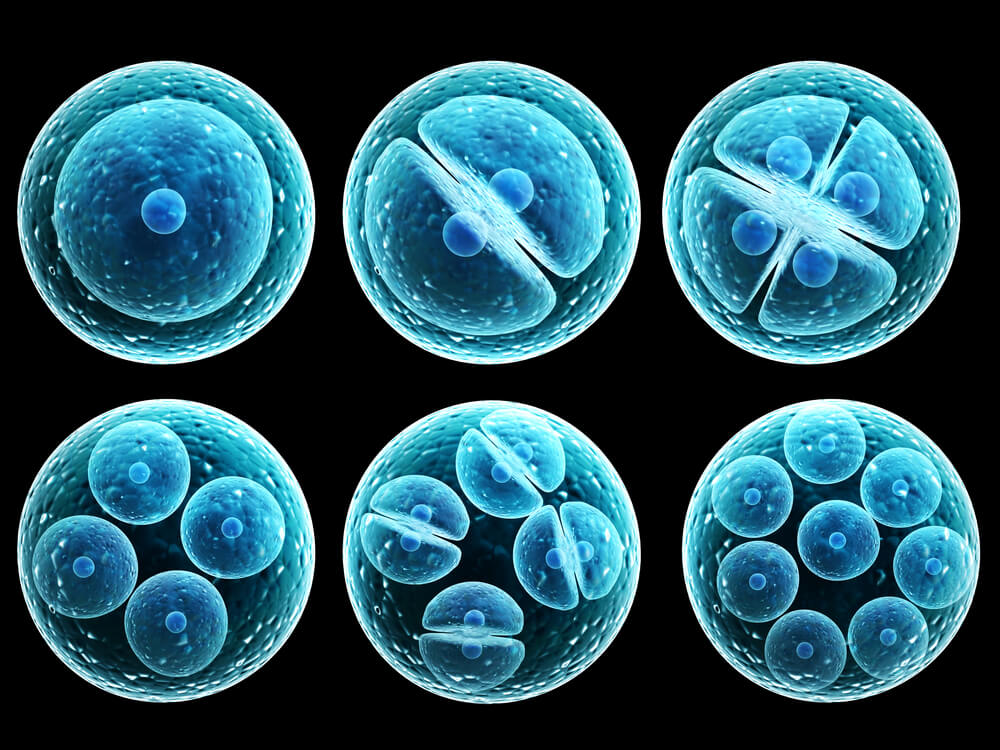
In the past few years, the specific role of telomerase in stem cells started to be figured out, especially in hematopoietic stem cells (HSC) [2][3], skin stem cells [4] and neuronal stem cells (NSC) [5]. For instance, it was observed that in men and mice, HSC lose telomeric DNA with age. This progressive shortening of the telomeres seems to act as a barrier to HSC development, limiting the regeneration of hematopoietic cells and the renewal of all blood cells [2].
Regarding skin stem cells, the role of telomere length and activity was always established from TERC-/- mice models, mice lacking the TERC gene. In those mice, telomere shortening is associated to a decrease of skin stem cells function and their mobilization (proliferation and migration) is inhibited outside of the hair follicles [4]. Those mice with critical length telomeres have issues with skin and hair regeneation, which signals skin stem cells malfunction. Besides skin cells, TERC-/- mice have exhibited the atrophy of other tissues that usually benefit from high cellular renewal, such as bone marrow, gut and testicular cells. This atrophy is linked to very short telomeres [1]. All these observations confirm that telomeres and telomerase play a role in preserving stem cells and the good health of tissues in the body.

Short telomeres modifying stem cell environment
If telomere shortening with age alters proper stem cell function, the process also seems to be linked to their cellular environment, which could accentuate stem cell deterioration as we age [1]. It was recently shown that short telomeres could also have a negative effect on stem cells microenvironment [6], in mice lacking the TERC gene. They have exhibited perturbations in skin stem cells function after an accelerated shortening of their telomeres. As a consequence, this directly affects lymphocyte B production, which affects in turn antibodies production, and increases myeloid proliferation which can cause a blood cancer characterized by an uncontrolled proliferation of white blood cells. Furthermore, the different modifications of cellular enviroment also limit the capacity of a tissue to accept a bone marrow stem cell transplant [6].
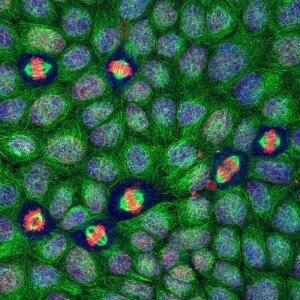
A link was established between the alteration of stem cell microenvironment and age, and the findings were correlated to the progressive shortening of stem cells telomeres.
On top of determining when a somatic stem cell will become senescent, telomeres and telomerase play a role in stem cell preservation processes, protecting those cells which are indispensible to the good function of the body. If telomerase activity seems to degrade with age, the alterations seems to accelerate the aging mechanisms and trigger stem cells degradation. They could be a great target for therapies based on telomerase regulation and preservation, in order to fight against aging.
See all of our articles on “Telomeres and aging”:
Telomeres, at the heart of the aging process
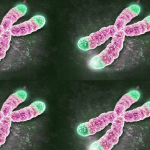 How and why does telomere shortening seem central to the aging process ? What is their role? How do they influence the aging process? And why do we call telomeres the “biological clocks” of our body?
How and why does telomere shortening seem central to the aging process ? What is their role? How do they influence the aging process? And why do we call telomeres the “biological clocks” of our body?
Part 1: Causes and consequences of telomere shortening during aging
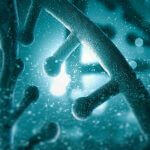 It is unclear how fast and why telomere shortening speed and aging vary from person to person. Indeed, the possible causes of telomere shortening can vary greatly.
It is unclear how fast and why telomere shortening speed and aging vary from person to person. Indeed, the possible causes of telomere shortening can vary greatly.
Part 2: Accelerated aging due to telomere and telomerase malfunction
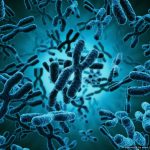 Telomere length and telomerase seem to be key factors of the aging process. Many studies on diseases resulting from mutations on telomerase components have shown that it leads to a lesser quality of cell renewal, which is a phenotype linked to aging.
Telomere length and telomerase seem to be key factors of the aging process. Many studies on diseases resulting from mutations on telomerase components have shown that it leads to a lesser quality of cell renewal, which is a phenotype linked to aging.
Part 3: Telomeres and telomerase in stem cells: central to the aging process
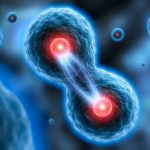 Telomerase expression diminishes in the few weeks that follow birth in most adult tissues, with the exception of certain types of cells such as stem cells. One can wonder if there is a link between the fact that the quantity of stem cells is lowered with age, telomerase function, and telomere length.
Telomerase expression diminishes in the few weeks that follow birth in most adult tissues, with the exception of certain types of cells such as stem cells. One can wonder if there is a link between the fact that the quantity of stem cells is lowered with age, telomerase function, and telomere length.
Part 4: Towards an aging metrology with telomeres
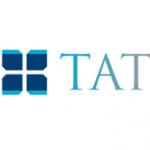 To measure aging, several methods based on telomere length have been developed. Today, there are 5 main methods, among which TAT, and STELA. They allow to obtain precious indications on physiological age and aging, from telomere length.
To measure aging, several methods based on telomere length have been developed. Today, there are 5 main methods, among which TAT, and STELA. They allow to obtain precious indications on physiological age and aging, from telomere length.
Part 5: Telomeres and aging, what therapies?
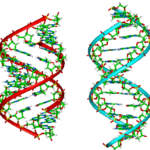 Telomere length is becoming an interesting lead to elaborate therapies and solutions to fight aging. We can speak of Elizabeth Parrish, CEO of BioViva, a biotech company in the US. She tested on herself two gene therapies developed by her own lab, one of which aims to lengthen her telomeres for “rejuvenation” purposes
Telomere length is becoming an interesting lead to elaborate therapies and solutions to fight aging. We can speak of Elizabeth Parrish, CEO of BioViva, a biotech company in the US. She tested on herself two gene therapies developed by her own lab, one of which aims to lengthen her telomeres for “rejuvenation” purposes
Katidja Allaoui

Author
Auteure
Katidja studied biology and health engineering at the school of engineering of Angers.
More about the Long Long Life team
Katidja a étudié l’ingénierie de la biologie et de la santé à l’école d’ingénieurs de l’université d’Angers.
En savoir plus sur l’équipe de Long Long Life
Dr Guilhem Velvé Casquillas

Author/Reviewer
Auteur/Relecteur
Physics PhD, CEO NBIC Valley, CEO Long Long Life, CEO Elvesys Microfluidic Innovation Center
More about the Long Long Life team
Docteur en physique, CEO NBIC Valley, CEO Long Long Life, CEO Elvesys Microfluidic Innovation Center
En savoir plus sur l’équipe de Long Long Life
References :
[1] Blasco, M. A. (2007). Telomere length, stem cells and aging. Nature chemical biology, 3(10), 640-649.
[2] Vaziri, H., Dragowska, W., Allsopp, R. C., Thomas, T. E., Harley, C. B., & Lansdorp, P. M. (1994). Evidence for a mitotic clock in human hematopoietic stem cells: loss of telomeric DNA with age. Proceedings of the National Academy of Sciences, 91(21), 9857-9860.
[3] Allsopp, R. C., Cheshier, S., & Weissman, I. L. (2001). Telomere shortening accompanies increased cell cycle activity during serial transplantation of hematopoietic stem cells. Journal of Experimental Medicine, 193(8), 917-924.
[4] Flores, I., Cayuela, M. L., & Blasco, M. A. (2005). Effects of telomerase and telomere length on epidermal stem cell behavior. Science, 309(5738), 1253-1256.
[5] Ferrón, S., Mira, H., Franco, S., Cano-Jaimez, M., Bellmunt, E., Ramírez, C., … & Blasco, M. A. (2004). Telomere shortening and chromosomal instability abrogates proliferation of adult but not embryonic neural stem cells. Development, 131(16), 4059-4070.
[6] Ju, Z., Jiang, H., Jaworski, M., Rathinam, C., Gompf, A., Klein, C., … & Rudolph, K. L. (2007). Telomere dysfunction induces environmental alterations limiting hematopoietic stem cell function and engraftment. Nature medicine, 13(6), 742.


